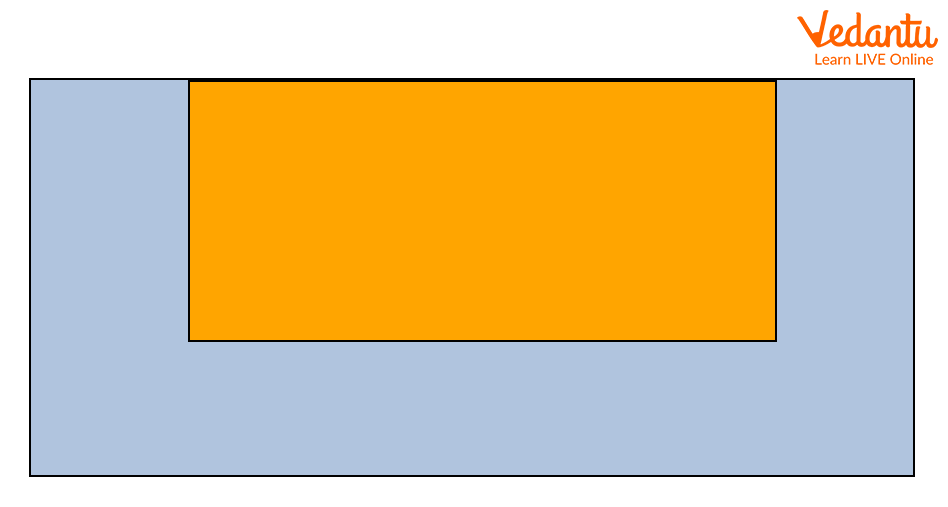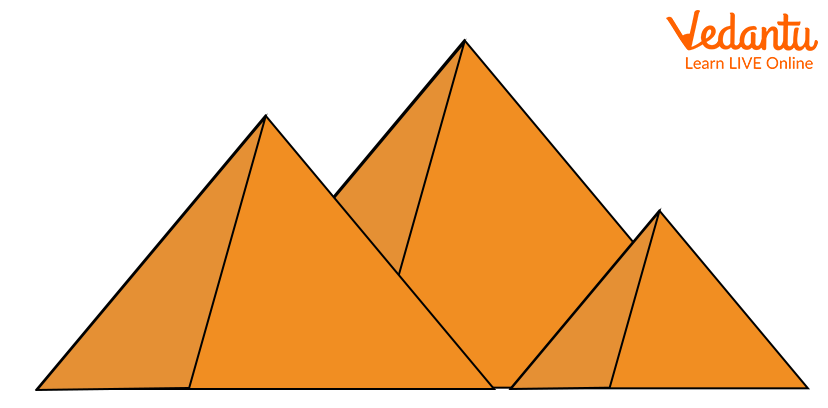




Real-World Examples of Flats in Mathematics
Flat Meaning for Kids
In Mathematics, flat means smooth, even, or plane. For example, plane shapes, two-dimensional shapes, etc.
Let us look at a few geometrical shapes that are flat to understand what is flat in Maths in a better way.
What Are Flat Shapes in Maths?
There are two types of shapes in Maths namely two-dimensional shapes and three-dimensional shapes. The flat shapes are two-dimensional shapes having only two dimensions i.e. length and width but no thickness. Flat shapes can be drawn on any plane paper, or flat surface.
Square, rectangle, circle, diamond, and triangle are some of the flat shapes in Maths.
Let us learn about these flat shapes in brief.
Square
A square is a two-dimensional flat shape that has four equal sides and four vertices. The flat area enclosed inside the square is known as the square region.
Example:
The wall or the table that has all four sides equal and square area enclosed inside this is an example of a square.

Wall in square shape
Rectangle
A rectangle is a two-dimensional flat shape whose opposite sides are equal and parallel to each other. The flat area enclosed inside the rectangle is known as the rectangular region.
Example:
The blackboard, rupee note, dollar notes, etc are some examples of rectangle shape.

Blackboard in rectangle shape
Triangle
A triangle is a three sided polygonal flat shape that has three sides and three vertices. The flat area enclosed inside the triangle is known as the triangular region.
Example:
Pyramids are one of the best examples of triangular shapes.

Pyramids in triangular shape
Circle
The circle is a two-dimensional flat shape that has only a curved boundary. The circle has no sides and corners. The area enclosed in the circle is known as a circular region.
Example:
The disk, pizza, wall clock, etc. are some examples of circular shape.

Wall clock in circular shape
Pentagon
The pentagon is a two-dimensional flat shape. It is a five-sided polygon. The flat area enclosed inside the pentagon is known as the pentagonal region.
Example:
The U.S. Department of Defence Headquarters is a perfect example of pentagonal shape.

A building in Pentagon shape
Octagon
The octagon is a two-dimensional flat shape. It is an eight-sided polygon. The flat area enclosed inside the octagon is known as the octagonal region.
Example
The stop sign board on the roadside is a perfect example of octagon shape.

Stop sign board in octagon shape
Other Solid Shapes with Flat Faces
Cube
A cube has 6 flat faces, 12 edges and 8 corners (vertices). Every face of a cube is square in shape. All sides of a cube are equal.
Example:
Rubix cube, sugar cubes, dice etc., are a few of the examples of the cube.

Sugar Cubes
Cuboid
A cuboid has 6 flat faces, 12 edges and 8 corners (vertices). Every face of a cuboid is rectangular in shape. Opposite sides of a cuboid are equal.
Example:
Shoeboxes, bricks, books etc., are a few examples of the cuboid.

A cuboid shape bricks
Cone
A cone has one flat face and one curved face. It also has one edge and one corner (vertex).
Example
Party hats, traffic cones, ice cream cones etc, christmas trees, are a few of the examples of the cone shapes.

A cone shape traffic cones
Cylinder
A cylinder is a solid object with two similar flat ends that are circular or elliptical and one curved surface. Note: The cylinder has a flat base and a flat top. The base is the same as the top. The shape of a cylinder from base to top stays the same.
Example:
Water cans, candles, beakers, test tubes, etc., are a few examples of the cylinder.

Beaker in cylindrical shape
Conclusion
In short, a smooth or even surface with no depth is termed as flat shape or flat surface. There are several two dimensional shapes in geometry that have a flat surface. Few of them include triangles, squares, rectangles, etc. Also, we have shapes such as cones, cylinders, etc. with flat faces. With this article, you will know how many flat faces solid shapes have.
FAQs on What Is a Flat in Maths? Meaning, Definition & Uses
1. What does the term 'flat' mean in Maths?
In Maths, 'flat' refers to a surface or shape that is perfectly even and smooth, with no depth. These are also known as two-dimensional (2D) shapes because they only have two dimensions: length and width. A flat shape can be drawn on a piece of paper.
2. What are some common examples of flat shapes?
Flat shapes are the basic shapes you learn about in geometry. Common examples include:
- Square: A shape with four equal sides and four right angles.
- Rectangle: A shape with four sides where opposite sides are equal in length.
- Circle: A round shape with a curved boundary where all points are equally distant from the center.
- Triangle: A shape with three straight sides and three angles.
- Pentagon: A shape with five straight sides.
3. What is the main difference between a flat shape and a solid shape?
The main difference lies in their dimensions. A flat shape is two-dimensional (2D), meaning it only has length and width, like a drawing on paper. A solid shape is three-dimensional (3D), meaning it has length, width, and height (or depth), so it takes up space. For example, a square is a flat shape, but a cube is a solid shape.
4. Can a solid object have flat parts? Explain with an example.
Yes, many solid objects have flat parts. These flat surfaces on a 3D object are called 'flat faces'. For instance, a cube has six flat faces, and each face is a perfect square. Another example is a cylinder, which has two flat circular faces at the top and bottom.
5. Is a circle considered a flat shape even though its edge is curved?
Yes, a circle is a flat shape. While its boundary is a continuous curve, the shape itself lies on a flat plane and has no thickness or depth. It is a two-dimensional figure, just like a square or triangle, making it a classic example of a flat shape.
6. How do we identify the flat faces on a solid shape like a cone?
To identify a flat face, look for any part of the solid shape that is a completely level surface. A cone has two types of surfaces: one curved surface that goes around and one flat circular face at its base. A party hat is a good example; the circular opening at the bottom is its flat face.
7. Why is it important to learn about flat shapes?
Understanding flat shapes is fundamental because they are the building blocks for more complex geometry and are all around us in the real world. Recognising them helps in various tasks, from art and design to understanding the basic structure of everyday objects like windows (rectangles), pizzas (circles), and road signs (triangles, octagons).















